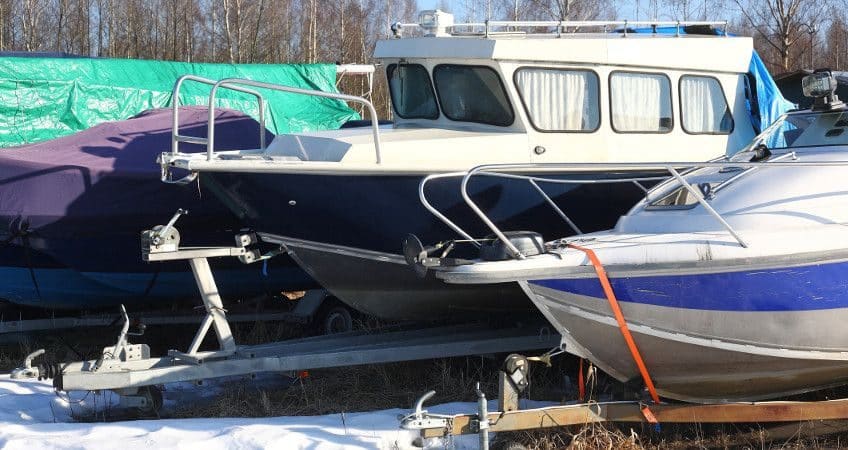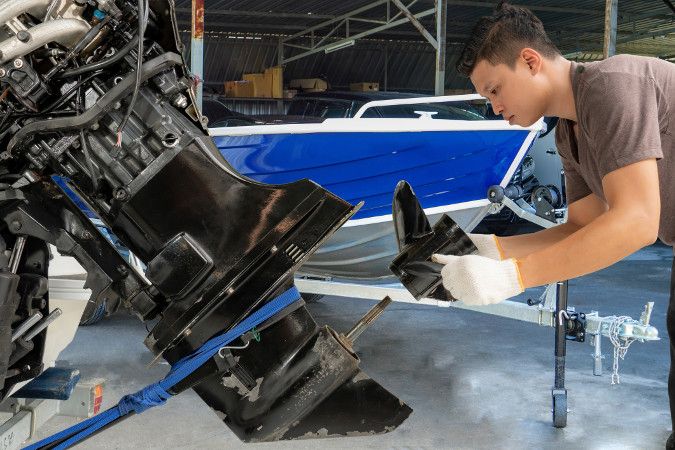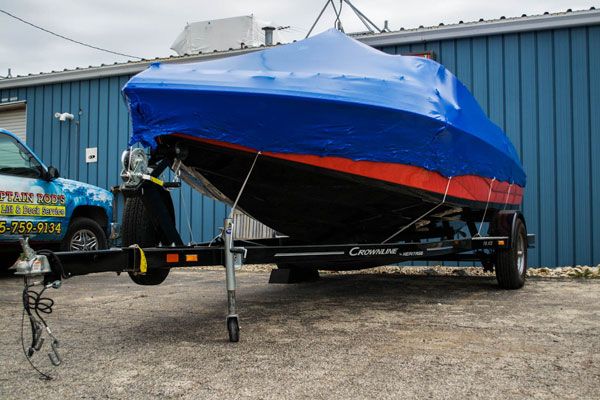Check These Areas When You Are Winterizing Your Boat!
Owning a boat is a big investment. However, it can also bring joy and excitement to your life for many years if you take good care of it. There’s nothing worse than waiting out the winter for that first warm day when you can take your boat back out on the water, only to find a list of necessary and costly repairs.
Make sure you know how to winterize a boat because it directly impacts your boat’s future performance and all-around lifespan. This includes checking all vital parts and covering it with boat shrink wrap.
Conversely, failing to protect and winterize a boat properly can cause significant damage. This damage leads to leaks, fuel degradation, corrosion, and damage to the interior and piping. Generally classified as “lack of maintenance,” these issues are not typically covered by most insurance policies.
Your first step should be reading the owner’s manual. Different boat models and engines have their own unique steps to successfully winterizing it. After you’ve familiarized yourself with the owner’s manual, make sure these following areas are covered!
Change Your Filters
Changing your oil and oil filter can help decrease the chance of residual moisture or acids that can hurt important parts of your engine. If you run the engine for a few minutes before you change the oil and filter, it will pick up any of the leftover acids and moisture. Then you should turn off the boat’s engine, change your oil, and replace your filter. During this time, make sure there are no leaks coming from your filter because that can also lead to engine damage.
Likewise, changing the water separator and filling and stabilizing your fuel tank before storage will prevent the build-up of condensation over the winter months.
Clean Your Outboard Engine
You want to flush your engine with fresh water and make sure it’s drained completely. From there, clean the outboard engine with soap and water, and make sure it’s thoroughly lubricated.
This is where familiarizing yourself with the owner’s manual comes in handy. Different engines have different procedures for cleaning your outboard engine. Make sure to consult the owner’s manual before you begin to make sure you have the right products and materials.
Clear Out Excess Water and Use Antifreeze
Your holding tank should be emptied at a proper facility and flushed with fresh water. Use boat antifreeze for all pipes and hoses. However, again, check your owner’s manual for the right steps and products for this part.
The excess water left in the pipes can freeze over during the winter months, even if you have your boat inside a storage unit and shrink wrapped. Unless the storage area is climate controlled, there is no way of knowing until the Spring if your pipes have frozen.
The BoatUS Marine Insurance claim files, over the course of 10 years, show that three-quarters of freeze claims are from mistakes made in clearing excess water or not using antifreeze to winterize a boat properly. This can cause issues such as cracks in the engine block or exhaust manifolds.
Clean the Bilge Pump
Like your engine, your pumps need to be winterized and thoroughly cleaned before you put your boat away for the winter.
If your boat stays in the water over the winter, you don’t need to winterize your bilge pump fully. However, you do need to check the pumps to make sure they are in working order.
However, if your boat is going into storage for the winter, you do need to winterize the bilge pump. Make sure you run antifreeze through the pump and do a thorough cleaning. You don’t want to leave anything behind that could cause problems on your first day back out on the water.
Consult your owner’s manual to see if your pump is self-draining as well.
Clean Out Your Interior
An overlooked but important aspect of how to winterize a boat is cleaning out the interior. Make sure you remove all valuables, electronics, fire extinguishers, and anything else that might freeze over or you’ll need in the winter.
Leaving your interior perfectly clean and dry will save you the headache of doing extra work when the warm weather returns. You can also take stock of anything you’ll need to take care of in the spring.
Shrink Wrap Your Boat
There are many ways to cover your boat. Many people may use simple tarps or custom-made fitted covers. But today’s technology has provided an even better option: shrink wrap.
Shrink wrapping is the process of covering a boat in plastic and using a heat system to shrink the covering, which forms a perfectly snug fit over your watercraft. Shrink wrap provides great protection to both the inside and outside of the boat. It also reduces the risk of dirt and dust seeping when the boat is not in use.
The smooth and soft shrink wrap material also protects your boat from the more extreme elements, such as high winds, rains, and snowstorms.
Storing your boat in a unit is always a good choice to help protect it, but even then, you should shrinkwrap it first. Shrink wrap is one of the only ways to fully defend your boat against any kind of damage.
Without shrink wrap, all that work you put into winterizing your boat might go to waste. We want you back on the water with as few problems as possible!
Do You Need Help Winterizing Your Boat?
If you want to make sure your boat is protected from the winter elements, why not have the professionals do it? Unlimited Shrinkwrap in McHenry, Illinois, offers the highest quality protection for your boat. With more than a decade of experience working with shrink wrap, we provide you the best defense against the winter. Give us a call today for a free quote!
Editor’s Note: This blog was originally published on March 14, 2016 and was updated on December 3, 2019.



